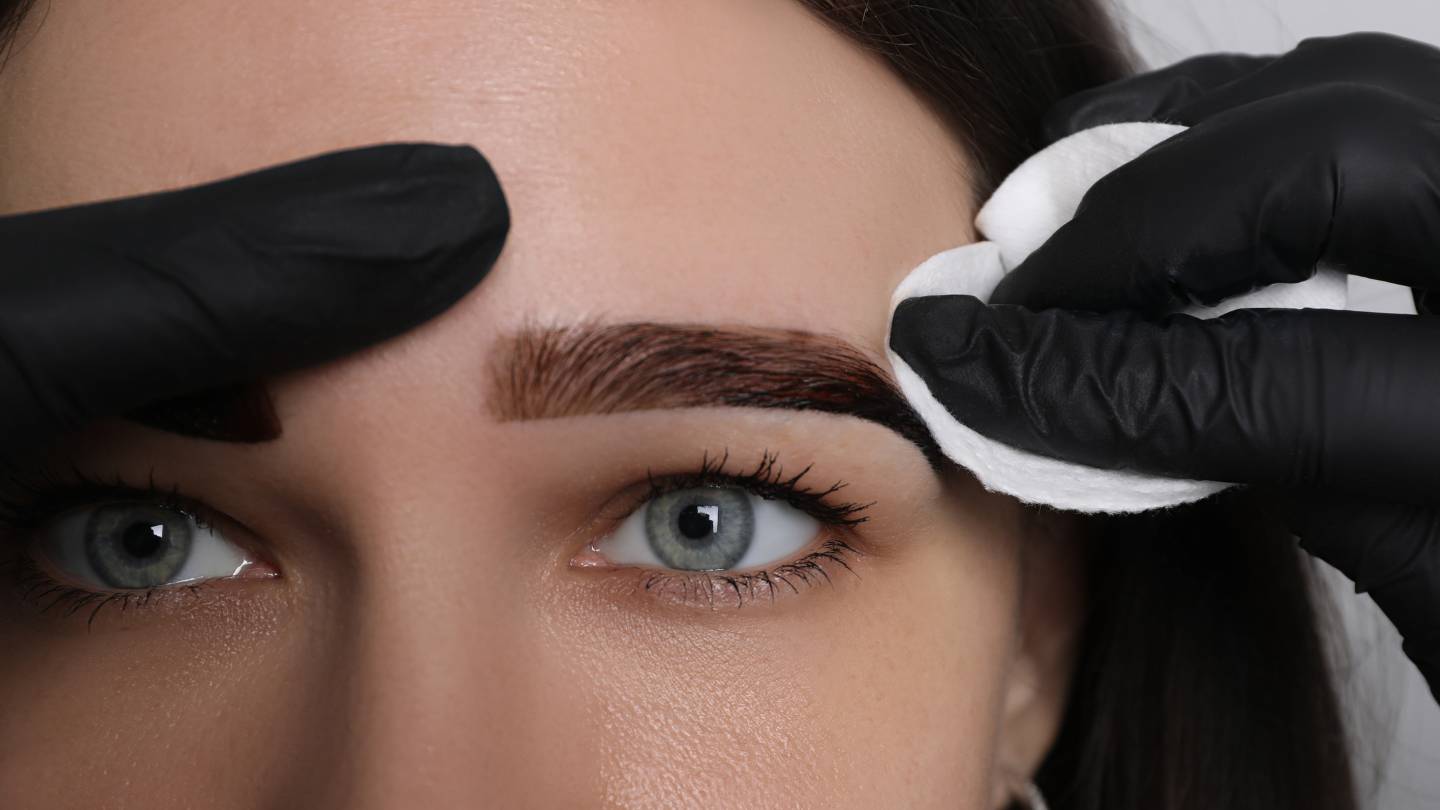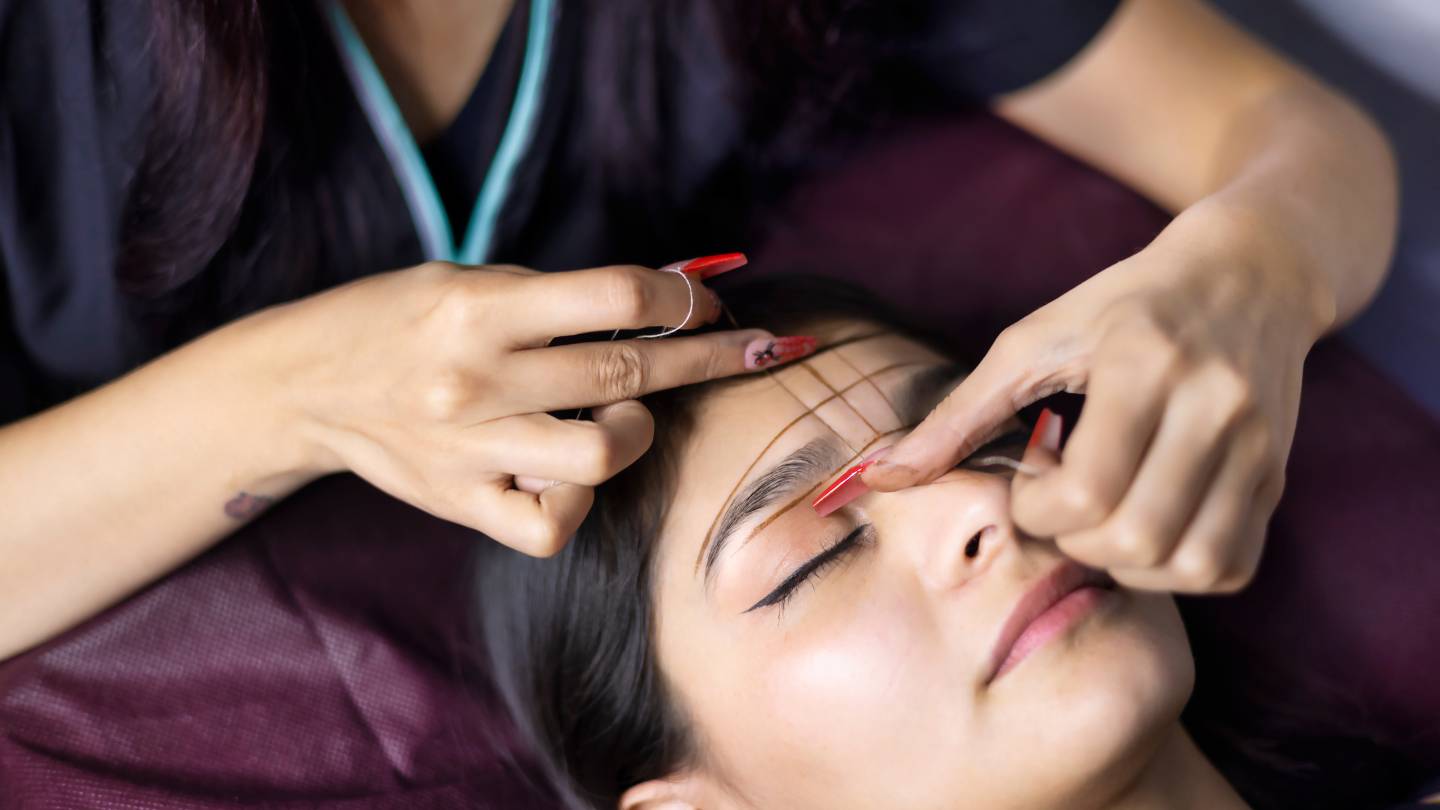Eyebrow feathering is an increasingly popular cosmetic procedure designed to create fuller, more natural-looking brows. It offers a semi-permanent solution for individuals looking to enhance their facial features without the daily use of pencils or fillers.
However, as with any beauty treatment, there are advantages and disadvantages to consider before committing. This guide will outline the benefits, drawbacks, and essential safety tips for eyebrow feathering, helping you make an informed decision.
Let’s get straight to the point.
Eyebrow feathering is a semi-permanent cosmetic procedure that uses fine, hair-like strokes to create fuller, natural-looking brows. It offers benefits like long-lasting results, saving time and money, and customisable colour and shape.
However, drawbacks include discomfort, the potential for uneven results, and expensive removal if unsatisfied. Safety tips include choosing a reputable clinic, following aftercare instructions (avoid sunlight, touching water, and skincare products), and monitoring for signs of infection.
Common techniques include feather, powder, microblading, and combination brows, each offering different styles. Proper care helps maintain results for up to two years.
Benefits Of Eyebrow Feathering
1. Fuller, Natural Appearance
One of the main advantages of eyebrow feathering is the ability to achieve fuller brows that look natural. The fine strokes replicate the appearance of real hairs, offering a subtle enhancement that complements your natural features.
2. Time and Money Saver
Many people spend significant time and money on eyebrow pencils, gels, or powders to fill in sparse areas. With eyebrow feathering, the results last up to two years, eliminating the need for daily touch-ups and reducing spending on brow products.
3. Customisable Colour and Shape
The procedure allows for customisation in terms of colour and shape. You can choose the shade and intensity that best suits your skin tone and hair colour.
Feathering offers flexibility, whether you prefer bold, defined brows or a more subtle enhancement.
4. Long-Lasting Results
Unlike makeup, which needs to be reapplied daily, eyebrow feathering provides semi-permanent results that last between 12 and 24 months. This durability makes it an appealing option for individuals with busy lifestyles or those who prefer a low-maintenance beauty routine.
Drawbacks Of Eyebrow Feathering
1. Potential for Unexpected Results
The results may only meet your expectations if a qualified professional performs the procedure. Poor technique can lead to uneven brows, incorrect pigment placement, or an unnatural appearance.
It’s essential to choose a reputable clinic with experienced technicians.
2. Discomfort During the Procedure
Since the treatment involves creating small incisions in the skin, some discomfort may be experienced. A numbing cream is usually applied beforehand, but patients with sensitive skin may still feel mild pain or irritation.
3. Difficult to Remove
While eyebrow feathering is semi-permanent, removing it can be challenging and expensive if you’re unsatisfied with the results. Laser removal treatments can cost more than the initial procedure and may require multiple sessions to achieve full removal.
4. Fading and Touch-Ups
Over time, the pigment used in eyebrow feathering will fade, especially with exposure to sunlight and certain skincare products. Touch-ups may be required every 12 to 18 months to maintain the desired look, adding to the overall cost and maintenance of the procedure.
Safety Advice For Eyebrow Feathering
To ensure a safe and successful eyebrow feathering experience, it’s important to follow specific safety guidelines. Here are some essential tips:
1. Choose a Reputable Clinic
Research the clinic and technician before committing to the procedure. Look for certified professionals with a portfolio of previous work.
Reading reviews from previous clients can provide insights into the quality of the clinic’s services.
2. Consultation is Key
Schedule a consultation before undergoing the treatment. During this session, the technician will assess your face shape, discuss your goals, and recommend a suitable eyebrow shape and pigment shade.
This step is crucial to ensure the outcome aligns with your expectations.
3. Follow Aftercare Instructions
Proper aftercare is essential for achieving the best results and preventing complications. Some important aftercare guidelines include:
- Avoid exposure to direct sunlight for at least a week after the procedure to prevent premature fading.
- Refrain from scratching or touching the eyebrow area to avoid infection and uneven healing.
- Stay away from water, steam, and saunas during the first seven days post-procedure, as moisture can interfere with the healing process and cause the pigment to fade faster.
- Avoid applying skincare products directly on the tattooed area for at least a week.
- Do not pick at any scabs that form during the healing process, as this can lead to uneven brows and pigment loss.
4. Watch for Signs of Infection
If you notice any redness, swelling, or discharge around the eyebrow area, consult a medical professional immediately. These could be signs of an infection requiring prompt treatment to prevent further complications.
5. Avoid Smoking and Alcohol
Smoking and alcohol consumption should be avoided for at least ten days after the procedure. Both substances can slow down the healing process and increase the risk of infection.
Maintaining Your Feathered Brows
To prolong the life of your feathered brows and maintain their appearance, it’s important to adhere to these maintenance tips:
- Avoid Direct Sun Exposure: Ultraviolet rays can cause the pigment to fade prematurely. Consider wearing a hat or using sunscreen once the area has healed.
- Gentle Cleansing: When washing your face, avoid the eyebrow area. Pat the skin dry instead of rubbing.
- Use Mild Products: Switch to gentle skincare products that won’t interfere with the pigment after healing.
Conclusion
Eyebrow feathering is a highly effective way to achieve fuller, natural-looking brows without the daily hassle of makeup. Its customisable approach allows you to choose the perfect colour and shape, making it suitable for various skin types and preferences.
However, it’s important to be aware of potential risks, such as discomfort during the procedure and the possibility of unsatisfactory results if performed by an inexperienced technician. By choosing a reputable clinic, following aftercare instructions, and staying mindful of the different techniques available, you can enjoy the benefits of eyebrow feathering while minimising the drawbacks.
With proper care and maintenance, this semi-permanent solution can give you beautifully enhanced brows that last years.
FAQs About Eyebrow Feathering
Can Anyone Get Eyebrow Feathering?
Most people can undergo eyebrow feathering, but certain medical or skin conditions may prevent some individuals from being suitable candidates. A consultation with a professional is necessary to determine eligibility.
Can I Still Shape My Eyebrows After Feathering?
The initial shape is created during the procedure, but slight adjustments can be made during touch-up appointments. It’s crucial to communicate preferences with the technician.
What Should I Look For In A Technician For Eyebrow Feathering?
Ensure the technician is licensed, experienced, and works in a clean, reputable establishment. Checking reviews and before-and-after photos can also help make your decision.
Are There Any Specific Aftercare Tips For Eyebrow Feathering?
Aftercare instructions typically include avoiding water, makeup, and excessive sweating for the first few days. Keeping the area clean and applying recommended aftercare products is essential.
Does Eyebrow Feathering Hurt?
Some discomfort can be expected during the procedure, but numbing creams are applied to minimize pain. Pain tolerance varies among individuals.


